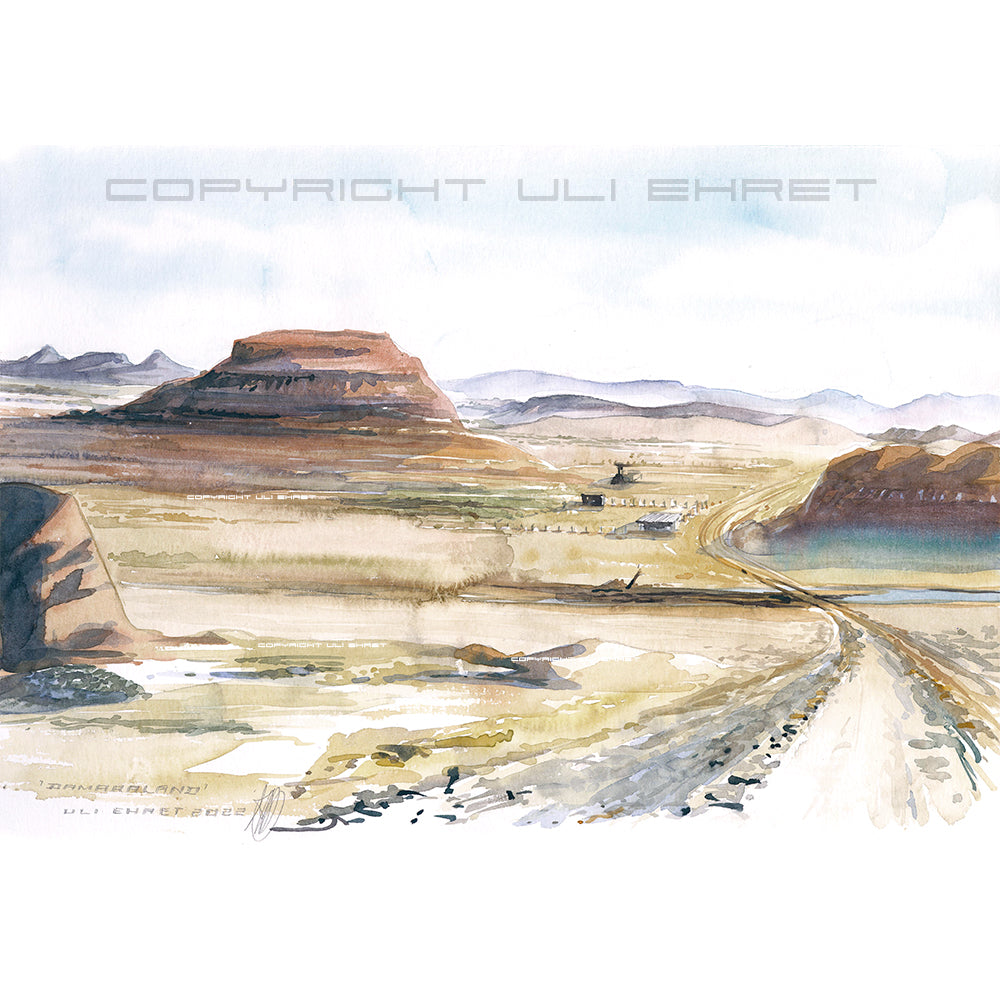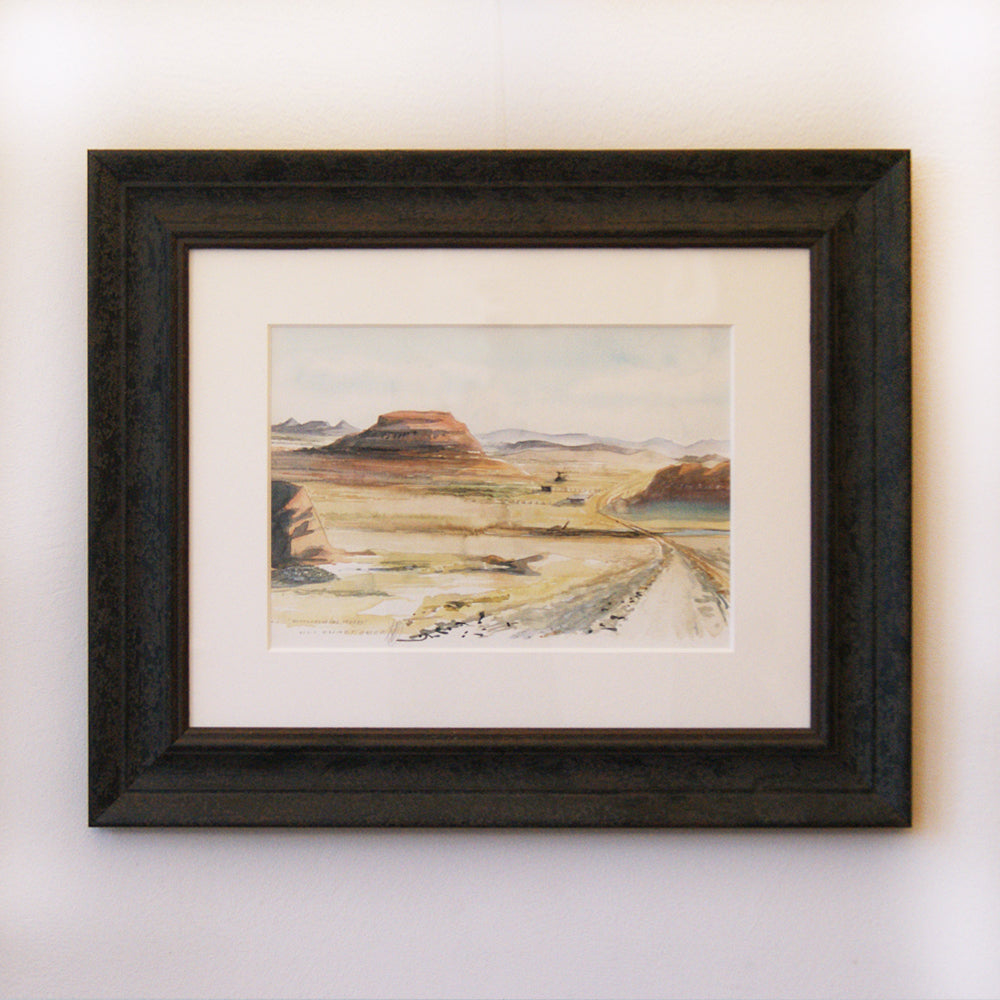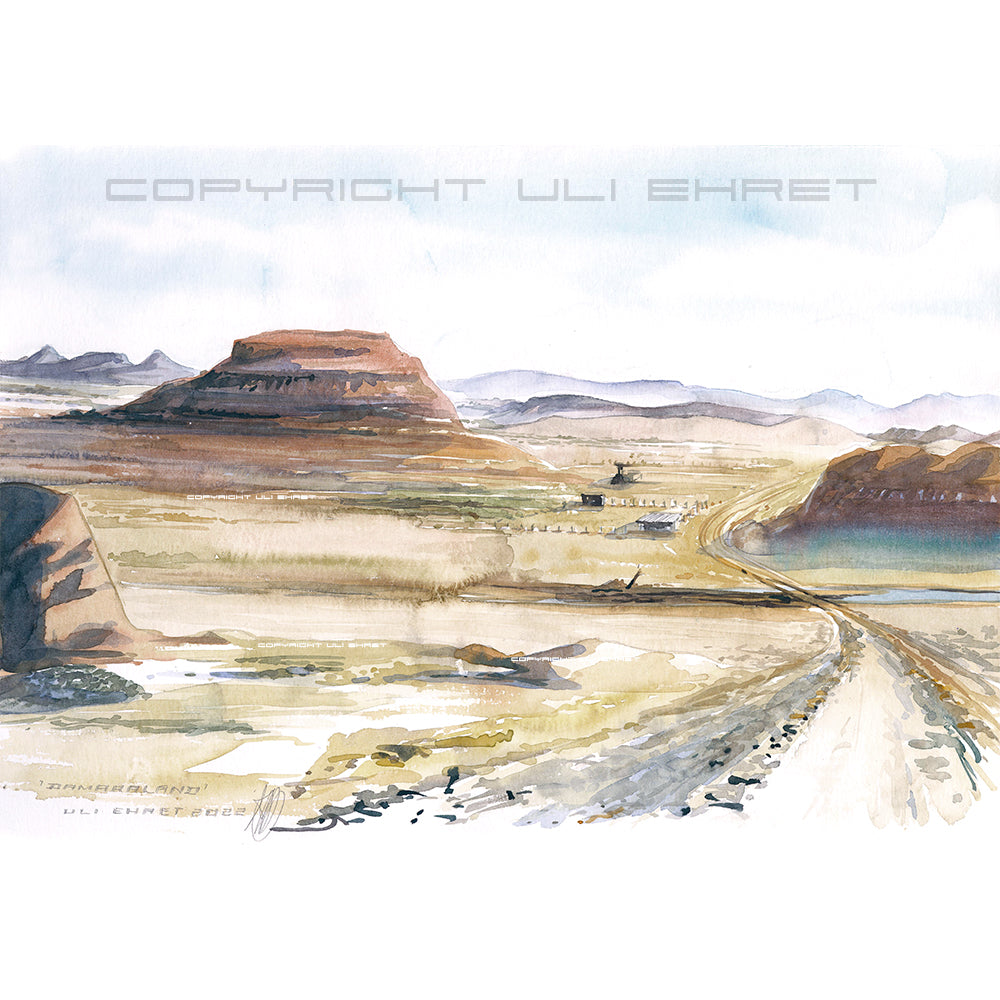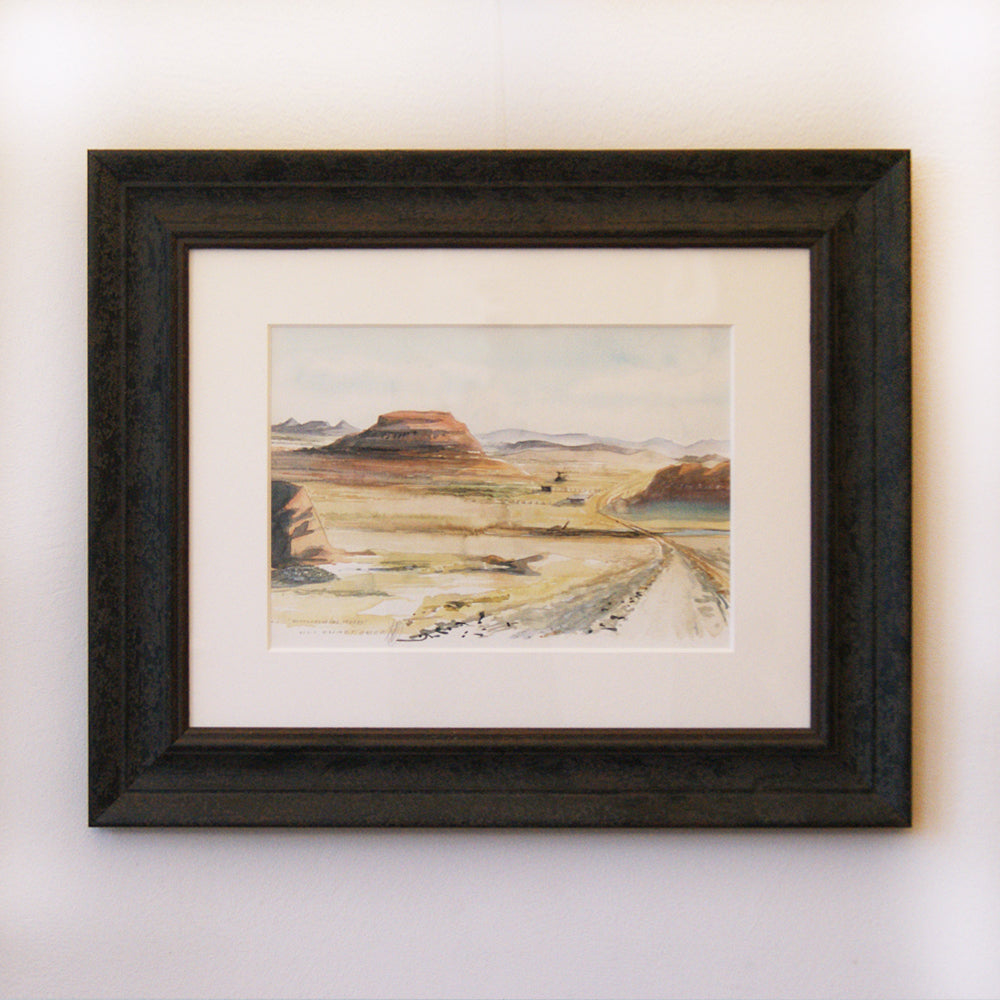Ulis Racing Legends
#1029 'Damaraland
#1029 'Damaraland
Couldn't load pickup availability
Namibia is a harsh country. The roads are graded from A to D. Category C are country roads that lead from towns that are sometimes up to 200 or 300 km apart, but where a town is not particularly important for traffic. Category D refers to roads that ar"&"e certainly rarely used and therefore only have small-scale regional significance.
This watercolor depicts our journey between Twyffelfontein and the entrance to the Skeleton Coast National Park. This journey crosses Damaraland, where Twyffelfontei"&"n is located. The view shows the Category C road, a well-maintained gravel track that was well-graded in many places. Originally, cattle ranching was possible in Damaraland. However, the persistent drought of the last two decades has robbed the land of an"&"y predictable fertility. On the approximately 260 km, we passed countless abandoned farms and communities. Lonely people could be seen here and there. Everyone seemed to be starving rather than living.
What was bizarre about this trip was that "&"it had just rained – even on the days we were in Damaraland. Somewhere in the vastness of this part of the country, a powerful thunderstorm must have raged over the mountains, and the rainwater rushed unhindered down the eroded slopes in numerous drifts t"&"oward the low-lying river valleys – which had been dry for years, or had previously resembled rivulets. In the Painting, you can see that a drift, a river crossing without a bridge, lies before us, muddy and thus dark. News of destroyed bridges and floode"&"d drifts made us change our original route plans.
On our day trip through Damaraland, we crossed two rivers with high water, about 50 to 60 cm deep fording. Water that had just formed the night before in the higher mountainous regions. Many oth"&"er drifts were like the one depicted in the watercolor, meaning they weren't as badly affected by the rain and were probably quite passable. The ""probably"" in the last sentence perfectly characterizes the adventure that Luk and I experienced again and a"&"gain. You experience everything for the first time in Africa. We were lucky enough to find the right ford at about 30 drifts and the two rivers.
The picture shows the beautiful landscape of Damaraland. The road winds up and down from 400 to 800 met"&"ers in altitude, always keeping an eye on the large boulders of gravel that can also ruin a bad day. The mountains were archaically shaped and reflected the rain of the past few days in hundreds of colors. At every bend, there was a different, new life. F"&"lowers and meadows, grasses and plants, each of which deserved a stop.
In the late afternoon of this beautiful day trip, our luck ran out. Shortly before the Gauriver Gate, at the end of the Skeleton Coast National Park, we took the wrong turn"&" and sank 80 cm deep into concrete-like mud. With the help of two local teenagers, we dug out ""Regina,"" our beloved Ford Ranger, over an hour and a half later – and continued the journey to great cheers. Cheers as if we had just won an important game. T"&"he fresh hyena tracks all around us also encouraged us to work quickly on the excavation project.
Luk and I hugged each other and generously thanked the two incredibly nice guys who had rushed to our aid. Another box we ticked on this vacation; I'd"&" never been stuck anywhere before. This story also secured us the last available hotel room on the Skeleton Coast. What a blessing.
Regina was brown from the window edge to the floor. A true hero's car. What a day – what a drive through Damaraland."&"
Original 42 x 30 cm,
Frame: Nimes III stained antique black, approx. 90 mm
ash gray-black, perfectly historically patinated, matte.
Ibis x1060-862
Outer frame size: 74 x 62 "&"cm
Glass/mount size: 56 x 44 cm
Mount 3375 soft white smooth museum quality, 3 mm, acid-free. Original 42 x 30 cm
Share



